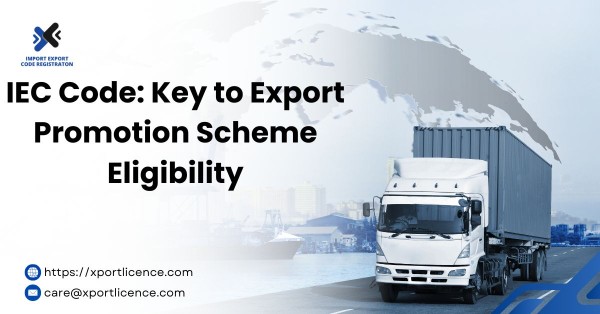


In today’s globalized economy, international trade plays a crucial role in the economic development of a country.
In today’s globalized economy, international trade plays a crucial role in the economic development of a country. Governments worldwide introduce various incentives to promote exports, enabling businesses to expand their reach beyond domestic borders. In India, one of the essential requirements for engaging in export activities and availing of government-backed export promotion schemes is the Importer Exporter Code (IEC). This article explores how having an IEC code helps businesses qualify for numerous export promotion schemes, enhancing their profitability and market presence.
The Importer Exporter Code (IEC) is a unique 10-digit identification number issued by the Directorate General of Foreign Trade (DGFT), Ministry of Commerce and Industry, Government of India. It is mandatory for businesses and individuals engaged in import and export activities. Without an IEC, an entity cannot legally conduct international trade. The IEC is a one-time registration that remains valid for a lifetime, making it a fundamental requirement for export businesses.
The IEC plays a vital role in enabling businesses to access various export promotion schemes introduced by the Indian government. These schemes are designed to encourage exports by providing financial benefits, tax exemptions, and incentives that help reduce operational costs and enhance global competitiveness. Below are some key ways in which the IEC helps businesses qualify for these schemes:
The Indian government provides multiple duty exemption and remission schemes to exporters to reduce the burden of customs duties and taxes. Having an IEC is a prerequisite for availing of these benefits:
Several government initiatives provide financial incentives to boost exports. The IEC is necessary for businesses to enroll in these programs:
To promote exports, the Indian government and financial institutions offer various credit facilities and financial assistance programs. Businesses with an IEC can access:
Businesses with an IEC can establish themselves in SEZs and EOUs, which provide numerous benefits such as:
Suggested read:- A guide to simplifying IEC Online Registration Process
The Importer Exporter Code (IEC) serves as a gateway for businesses to access a multitude of export promotion schemes, financial incentives, and trade facilitation programs offered by the Indian government. It not only ensures legal compliance but also enhances global market opportunities. By obtaining an IEC, exporters can significantly reduce costs, improve profitability, and expand their business beyond domestic boundaries, ultimately contributing to the growth of India’s export sector. Therefore, businesses aspiring to engage in international trade must prioritize acquiring an IEC to unlock the vast benefits available through various export promotion initiatives.
